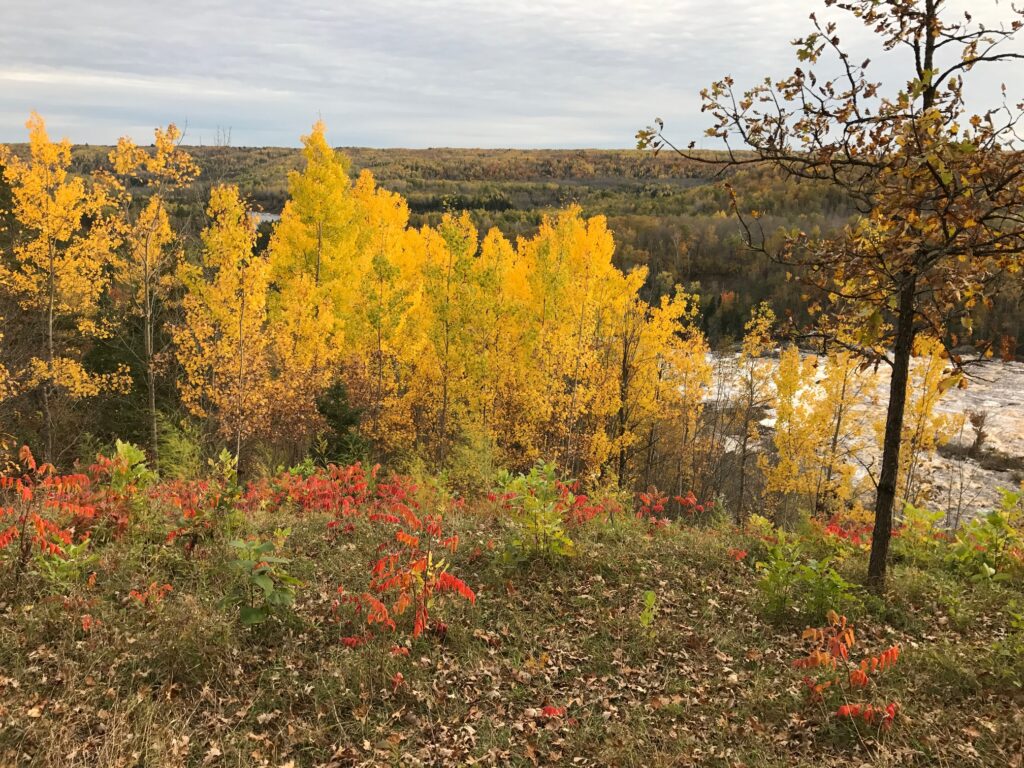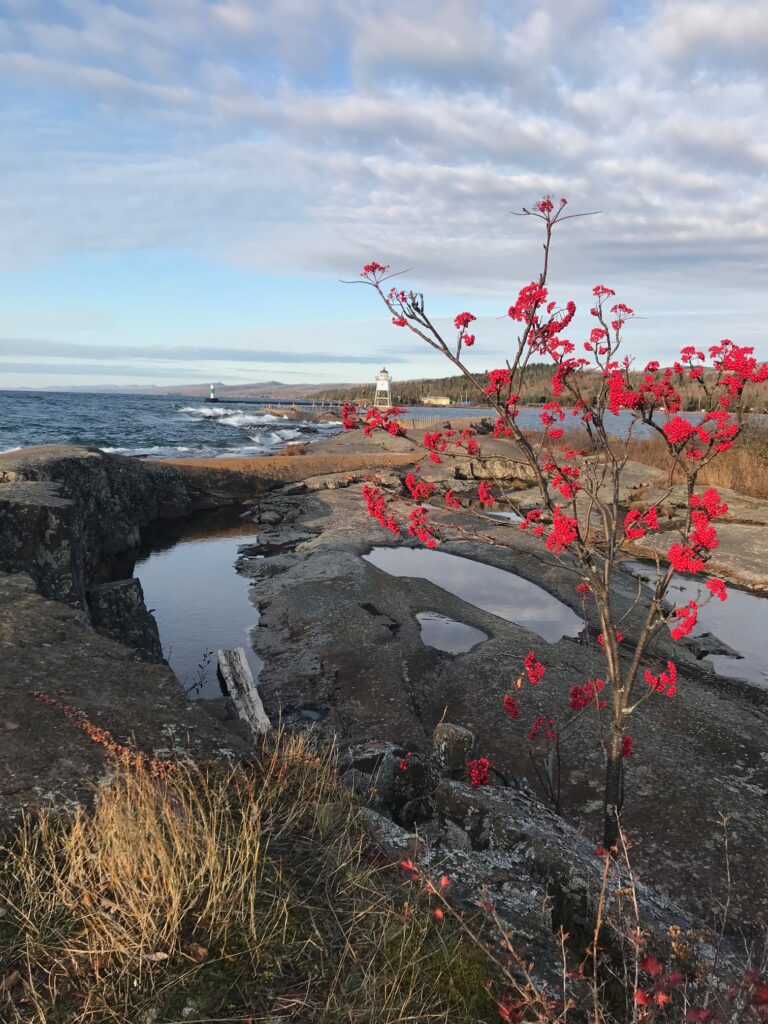“Life starts all over again when it gets crisp in the fall,” said Jordan.
“And I guess it always will, no matter how old we get.
It’s a way of clearing out the old and making room for something new.”
—F. Scott Fitzgerald, The Great Gatsby
Maybe that’s why I love the fall. In Minnesota, we rush through summer, greedily taking it all in, because we know that the season is so short. In autumn, though, we get back to real life, with a new start. In ancient Rome, the new year began on September 1st. Why not in Northern Minnesota too?
There’s so much to watch for in the natural world once the days start getting shorter:
Fall Flowers: Even as the landscape turns brown, there are bursts of color that stand out this time of year: the purple asters beam and goldenrods glow along the roadsides. It’s always fun to see late-bloomers, sometimes even peaking through the snow.
Colored Leaves: As the chlorophyll fades out of plant leaves, they begin to flare with yellows, oranges and reds. To me, it always feels as if they are revealing their true, hidden nature when this happens. These leaves provide tiny pleasures one-by-one. Together, they can seem to be shining with their own light.

Migrating Hawks: The North Shore is a world-class hawk migration path. During the months of September and October, when the winds are out of the west, tens of thousands of raptors fly southwest along the shore of Lake Superior. They don’t generally want to cross the cold water of the big lake, plus the Sawtooth Mountains provide perfect conditions for soaring birds. Thermals form above each of the bare, rocky tops of the hills, and hawks seek out these escalators to ride up into the sky, saving precious energy for the parts of their long journeys when they need to flap.
In September, there will be big flights of Broad-winged Hawks and Sharp-shinned Hawks, along with a dozen or so other kinds of raptors. More Bald Eagles, Northern Goshawks, and Rough-legged Hawks pass down the North Shore in fall than anywhere else on earth.
Mushrooms: Fall is the time for mushrooms to fruit. Their mycelia (root-like bases) live and grow in the ground all year round, and when conditions are right, mushrooms spring up from the forest floor. Those conditions are usually best in early autumn, so while your eye may be drawn upward to the hawks and leaves, don’t forget to scan downward too, for orange, red, white, or brown mushrooms.
Berries: You may think of spring and early summer as big berry season, but there are some beauties in the fall too. The ones I’m thinking of are more for viewing than eating. On the forest floor, wintergreen berries turn red. The berries of Canada Mayflower turn from copper-colored to deep red in late fall. Hawthorns and dogwoods may sport berries this time of year too. The showiest are Mountain Ash berries, which may be found everywhere but are concentrated in Grand Marais and close to the lake along the shore.
Mountain Ash berries will display their deep orange beauty well into winter, unless it’s a good year for Bohemian Waxwings. These close relatives of Cedar Waxwings only visit us during winter. They sometimes travel in flocks numbering in the thousands, and some years, they clean out all the Mountain Ash berries in Grand Marais in a day.
Snow Buntings: Late in October, as your car rolls along almost any road in the North Woods, flocks of Snow Buntings may fly up from the roadside. When their wings are folded, as they search for seeds in the gravel, they can be almost invisible; in this posture, they show mostly rusty-brown with streaks of black and white—they are particularly camouflaged in a brown, autumn landscape with a little bit of snow here and there. They migrate together in flocks of up to hundreds of individuals.
When these flocks are flushed, they explode from the roadside into the air in a mass of fluttering white. If you didn’t notice them in the gravel as you approached, the flight can be quite a surprise. Snow Buntings nest on the tundra in the far north, and they are headed to the fields of the Great Plains. Small numbers will over-winter in southern, agricultural Minnesota. The big flocks we see in late fall are one of the characteristic images of the North Shore.
All the Other Birds: In addition to raptors, Snow Buntings, and Bohemian Waxwings, many other species use the North Shore as their migration highway. Warblers and other songbirds flow down the shore in September, October is the month for sparrows, ducks, and other waterfowl, and in November, we start seeing visitors from the North, like Northern Shrikes, Pine Grosbeaks, and Snowy Owls.
Waves and Storms: Fall is the time for epic storms near Lake Superior, and the rocky coast of the North Shore makes spectacular spray and giant crashes. A few years ago, I was leading a bird tour during one of these storms. We saw some good birds, but when I have run into participants years later, they comment on how cool it was to see those waves!
The Changing Panorama: The rest of the year, the landscape changes slowly, as the world moves from brown, to light green, to the full green spectrum near the summer solstice, to more faded green as summer wanes. In fall, however, a hillside might be full of colored leaves one day, and a good cold front will turn it brown the next. The colors will change until one day, the first big snowstorm will make another instant transformation into a world of white. The North Shore has many great places to watch this. Drive any of the roads up the hillside, and you will find places with spectacular vistas to watch the changes. If you hike the Superior Hiking Trail, which mostly follows the ridgeline of the hills, you will have access to many more.

